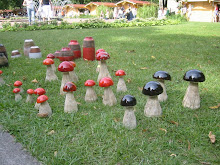Design means different things to different people. Here are what I think are essential to understanding what design is.
Design is not art or pretty stuff. Design is a multi-disciplinary process integrating art and culture, user and market needs, business considerations and technological considerations.
It follows that design is not for people who like to draw. We need to switch from the concept of a designer to a design team with professionals from various disciplines working together, from psychologists, sociologists, anthropologists to business strategists, marketers, engineers, IT specialists and so on. In the renowned Mayo Clinic in the States, both doctors and nurses work in a design team to design better experience for patients and more effective operation processes for the Clinic.
Design should in no way be associated with luxury, but should be part of our every day life, whether you have deep pockets or not. Ikea is a good example that design and good design can be affordable to most people. In Europe and the US, many governments are using design principles and processes to improve the delivery of health care, education and social services for the underprivileged.
So design is applicable to both tangible 'stuff' and intangible services and experience. If Hong Kong has nothing but services industries, our schools should teach 'service design' in a big way. And it is not just the design school. Service design should be integrated into each and every discipline. Our design incubators like the InnoCentre and the future Hollywood Road Creative Cluster should open its doors not just to product, graphic, interior, fashion and jewellery designers, but design teams that design business strategy, process, service and experience.
Finally, design helps us understand the difference between creativity and innovation, which are often treated as synonyms but are actually two vastly different concepts. Design is the process that translates creative ideas into useful and profitable applications (i.e. innovation). Here is my analogy: creativty is flour, innovation is bread and design is the bakery process.
I would like to end with two more clarifications: Innovation is not an industry - it should permeate in every industry; and innovation is not just about technology. Innovation has to fulfil unmet needs in the marketplace. This is why countries like Denmark are investing heavily in developing and promoting user-centric innovation.
Subscribe to:
Post Comments (Atom)




A definition I have always liked for 'design' is:
ReplyDelete"A conscious process to shape a product or service so that it better meets functional and emotional needs of its intended users."
I think this links closely to the points made well in this post.